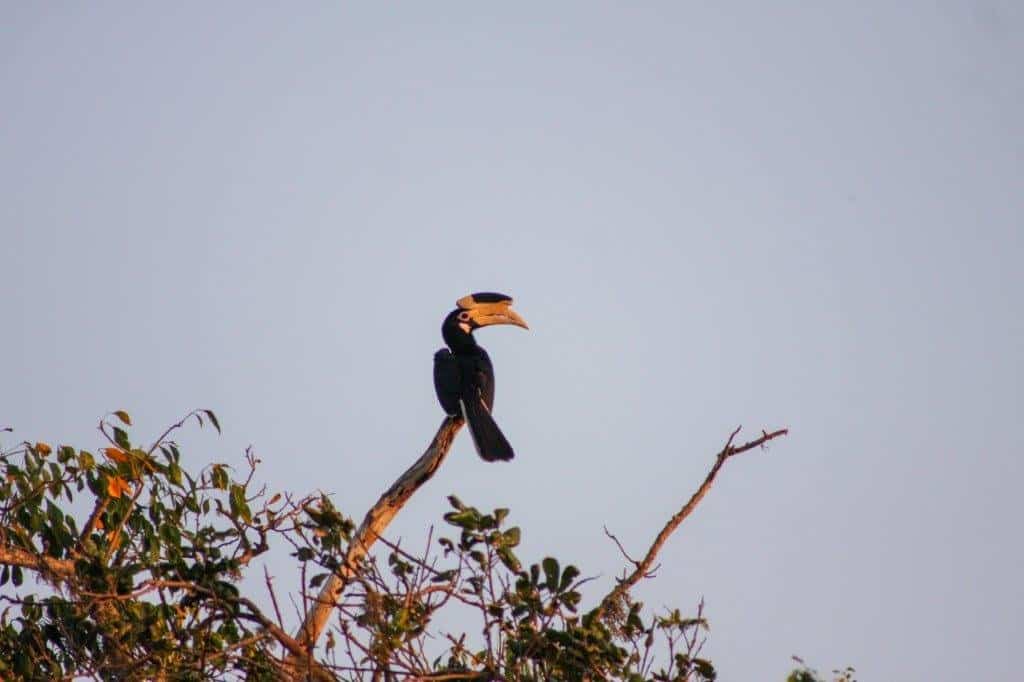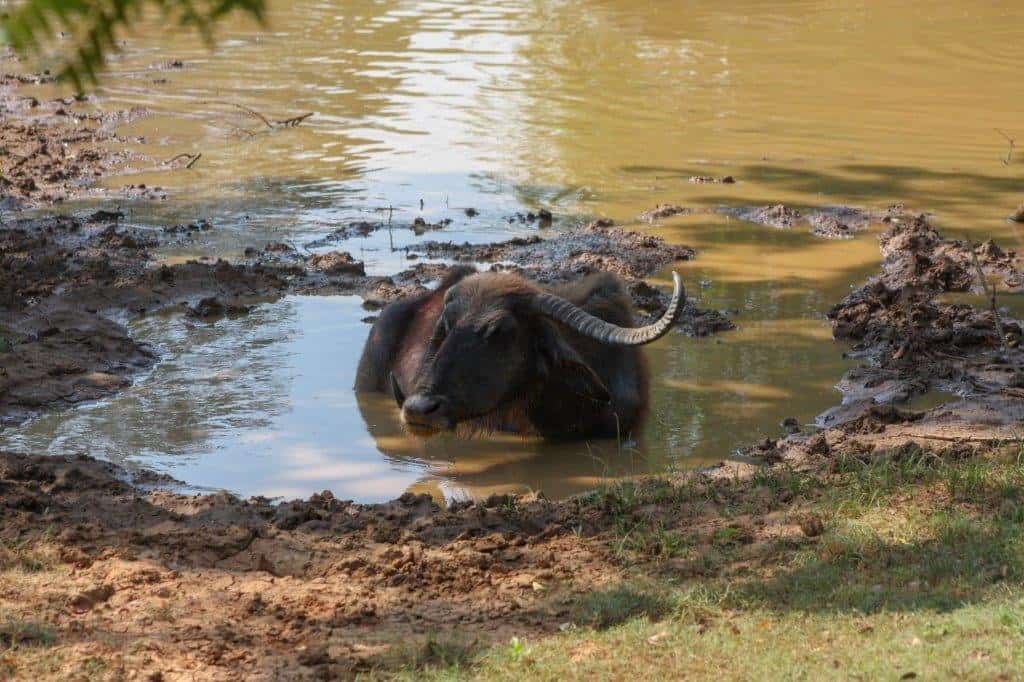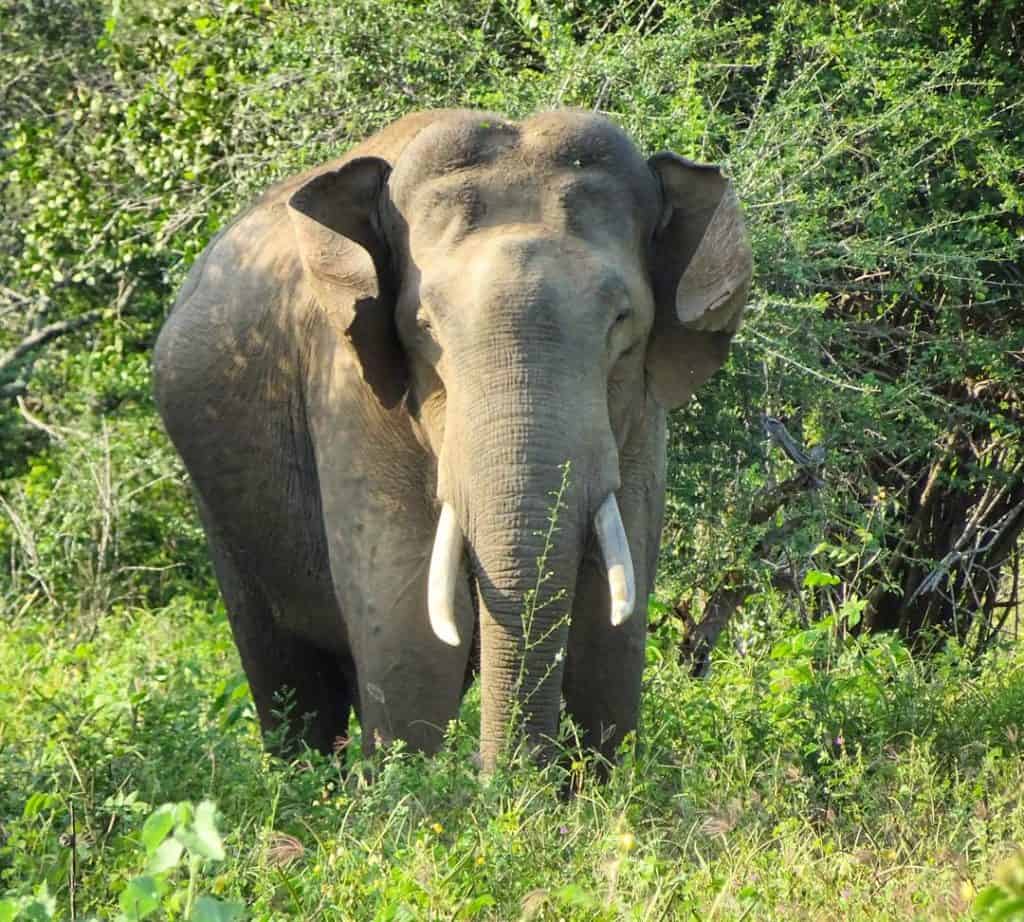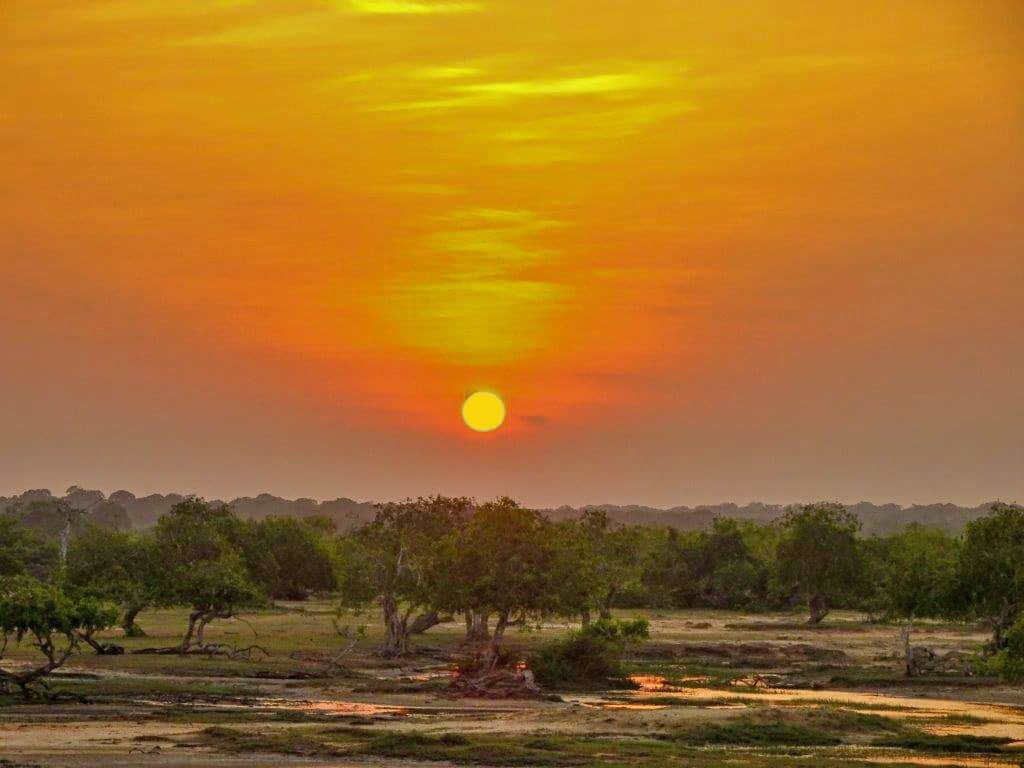October 2019
If you have ever wanted to go on a safari, then consider Sri Lanka.
We were on a 7-day tour of Sri Lanka which included an afternoon wildlife safari at Yala National Park. Our drive from Ella, south to Tissamaharama, was a 2-hour journey.
We were excited. Going to see animals in their natural habit, to observe them in the wild, would be amazing.
Sri Lanka has 26 National Parks to protect its fauna, flora, and wildlife covering an area of over 5,734 km2. To visit a National Park requires a permit.
And most visitors also organize a guide to having the best experience of seeing leopards and elephants. Two of the most popular safari animals in Sri Lanka.
Where to Stay near Yala National Park
The Grand Yala Hotel in Tissamaharama is a 30-minute drive from Yala National Park.
The Grand Yala Hotel is relatively new with large, comfortable, and clean rooms. You have your own patio with comfortable chairs to enjoy an evening drink. And having an outdoor swimming pool is perfect to cool the body after an afternoon safari.
Breakfast, lunch or dinner is available at the outdoor restaurant. The quality of the dishes is superb and flavorsome.
Location: Gunawardana Mawatha, Debarawewa, Tissamaharama, Sri Deepankara Mawatha, Debarawewa, Sri Lanka
Our Guide for a Safari at Yala National Park
After a delicious lunch, our driver had organized a safari guide and truck. He is an elderly gentleman with more than 20 years of experience, guiding visitors through the park. So, we had a good chance of finding the elusive leopard.
Our truck wasn’t the newest, but our seats in the covered raised deck were comfortable. We covered ourselves in sunscreen and insect repellent, ready for the adventure.
Sitting high up in the truck, we chugged off on another hair-raising journey on the Sri Lankan roads.
A stop on the way for a Sri Lankan flavored ice block called Davila. It is made from the soursop fruit and Coconut Rock (similar to coconut ice with less sugar). Yum and refreshing in the heat.
Wildlife Safari of Yala National Park

Yala National Park became a wildlife sanctuary in 1900. The park borders the Indian Ocean and covers 979 square kilometers with ecosystems of monsoon forests, grasslands, and wetlands.for:
- Sri Lankan elephants
- Sri Lankan leopards
- Aquatic birds
What makes Yala National Park popular with tourists is the wildlife they get to see. As the second-largest safari park you can cover a large area to see:
- Elephants
- Crocodiles
- Water Buffalo
- Deer
- Monkeys
- Birds like egrets, kingfishers, and hornbills
Entrance Fee for Yala National Park
As we entered the park, we handed over a 7,000 rupee (USD50) entrance fee to our guide for a half-day tour.
We knew we had the right guy. He drove past all the younger guides, parked at the head of the queue, bounced inside, got our tickets, and was back in 5 minutes. While all the other visitors still hadn’t moved.
Elephants, Crocodiles, and more in Yala National Park

Driving along a dusty dirt track, five minutes later, we saw our first mammal – an Asian elephant wandering the pastures – click, click, click – we had our photos and carried on driving.
The early indications were no sightings of leopards in the trees next to the nearby tracks. No worries, there were plenty of other animals, birds, and reptiles to keep our interest, for now.
The next bit of excitement, a crocodile on the bank of a watering hole with his mouth wide open. An Egret was getting perilously close to his big teeth.
Crocodiles gape their mouths as a method for cooling themselves down, so it seemed the Egret was safe for now.
How exciting when next we came across a family of Elephants, including three youngsters, two that stayed near the adults and one-off by himself exploring.
It seems in every family; one is always an independent explorer.
Still, no Leopard sightings reported as another driver slowed, wound down his window, and shook his head to our driver.
Yala Park has many paths the vehicles can follow, so at times we were on our own, and at other times, we were in convoy with 6-8 other trucks. The drivers have a system for giving each separate room and passing on tips about where the leopards may be.
Seeing the Big Tusker in Yala

It was getting on to 5.15 pm, with all vehicles due to be out of the park by 6 pm. We were running out of time on our Leopard hunt. Eyes peeled, ever hopeful of spotting the big cat we slowed as the nearby bushes were shaking.
Two female Elephants came out into the grassy area for an evening feed followed by a huge tusked male. He was a magnificent sight with huge curved tusks.
Our guide said a male with tusks was a rare sighting. Most male elephant tusks are removed to prevent being killed by poachers for the black market ivory trade.
Near the park exit, another driver indicated the leopard could emerge from a nearby tree or bush on our side of the road.
But after a 20-minute wait in anticipation, no sighting.
However, we left Yala National Park after a fantastic safari experience, as the sun was setting.
Sunset and Dinner – Yala National Park

Having started the day in Ella, watching the train cross the Nine Arches Bridge and finishing with a wildlife safari, was an exceptional travel memory.
Nishantha our driver joined us for pre-dinner drinks with a local drink called Arrack, made with coconut. It was very smooth in taste and goes down so smoothly.
The sunset, relaxing with a drink, and enjoying delicious Sri Lankan dishes was a perfect end to Day 6 of our 7-day itinerary of Sri Lanka.
The next day we were off to dip our toes at Mirissa beach.


Love the hats
Thanks Dad – an Aussie purchase a few years ago so they came in handy. Made us look more authentic Safari people.